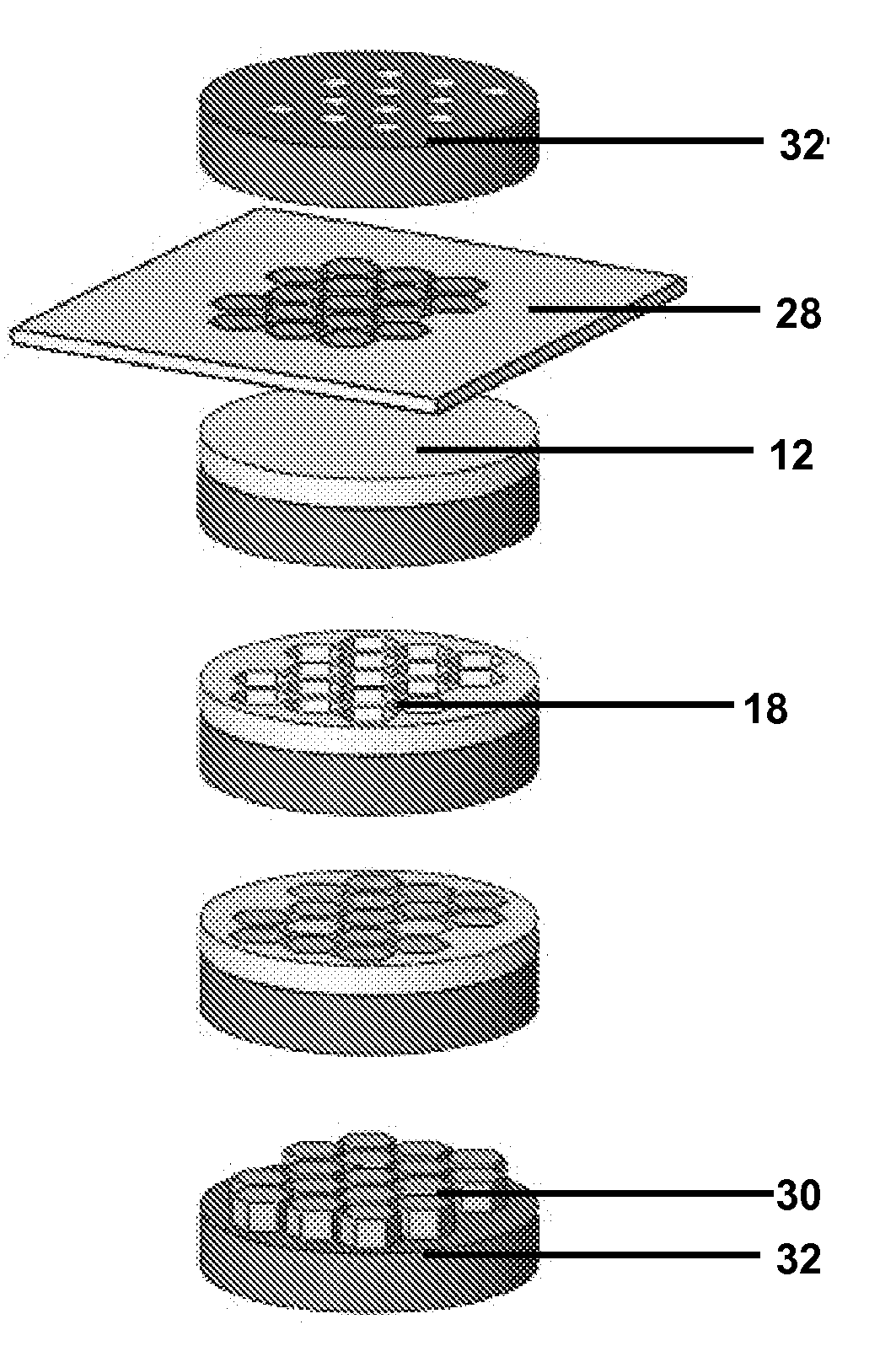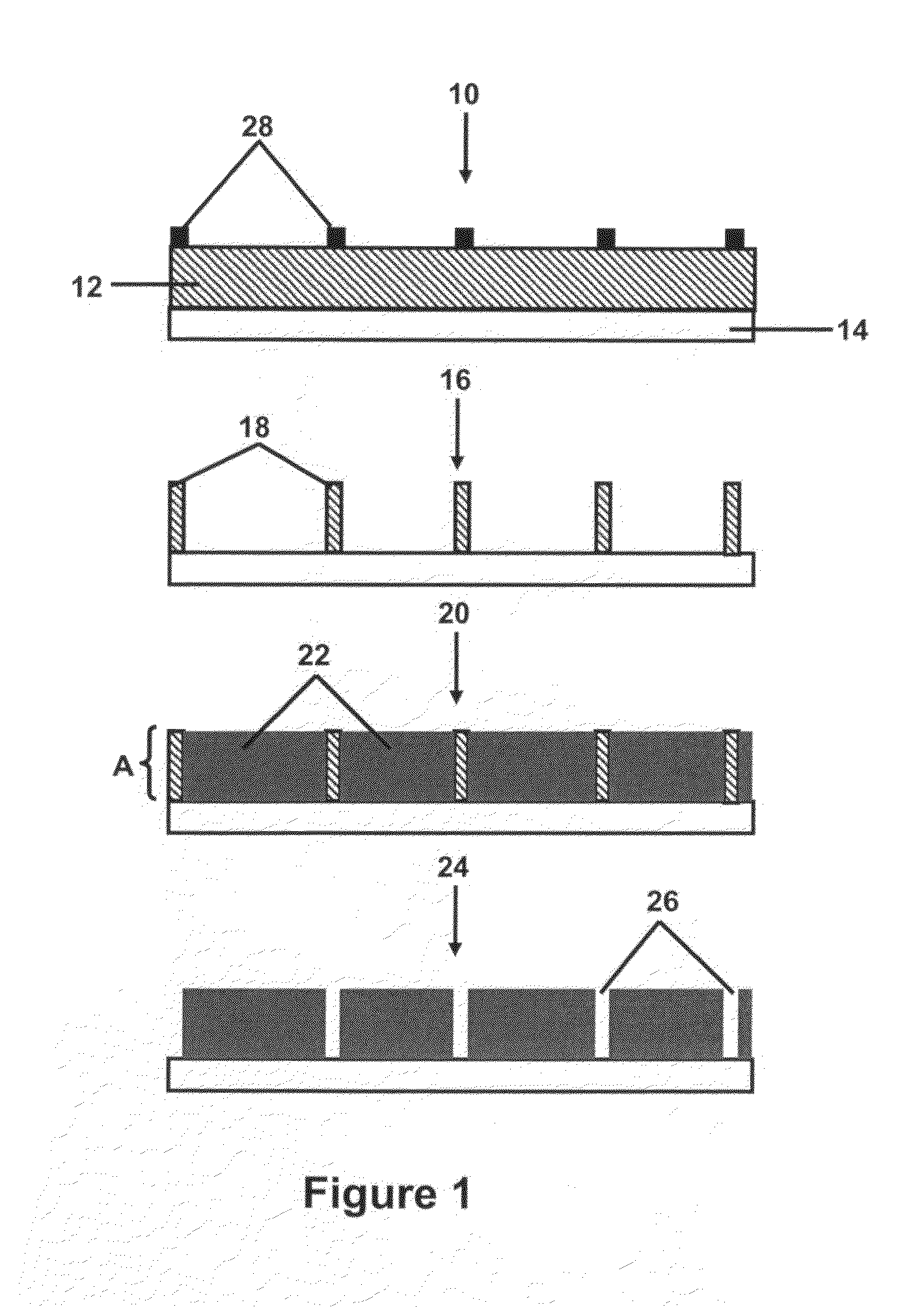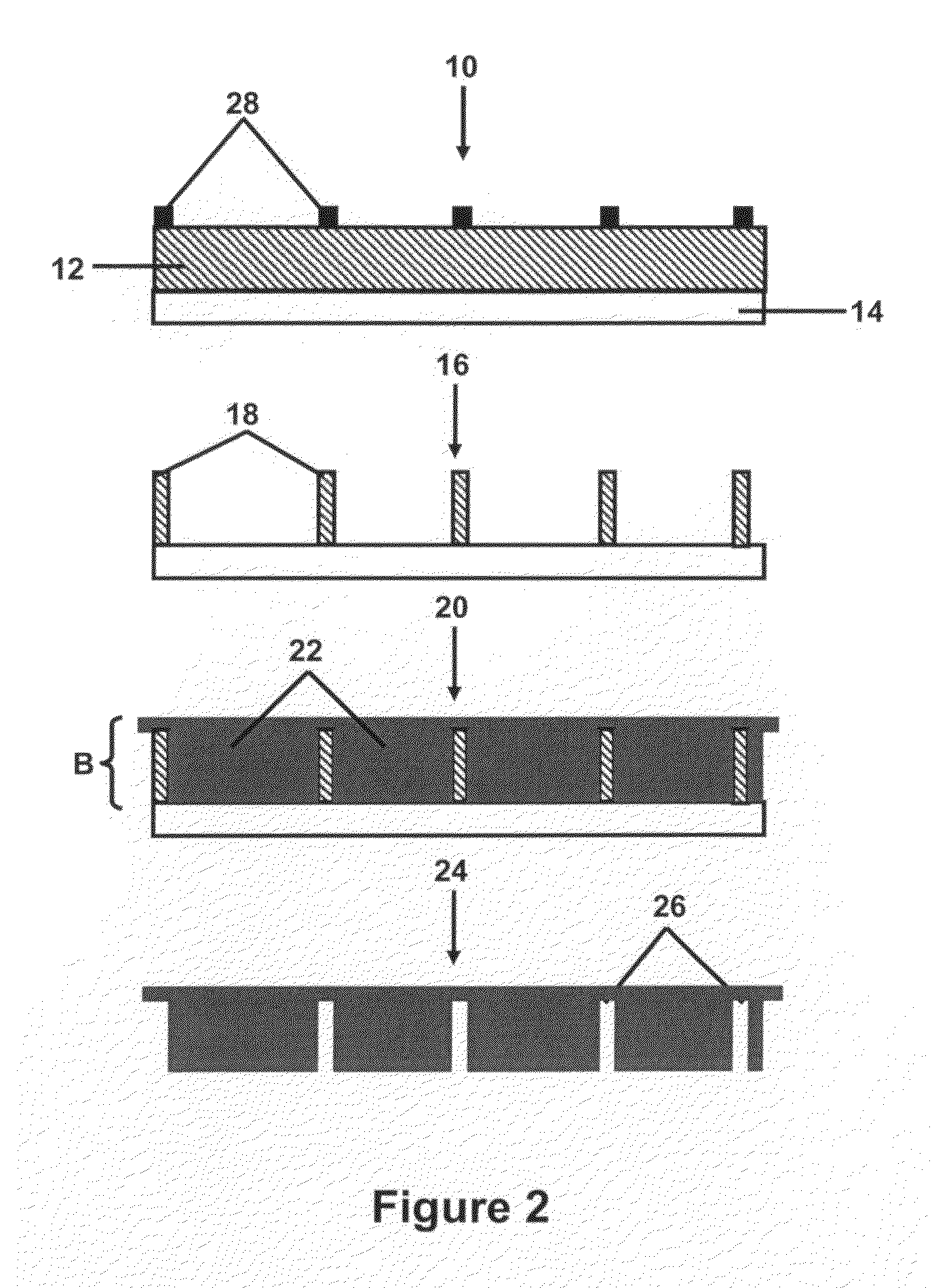Methods of making extrusion dies
a technology of extrusion dies and dies, which is applied in the direction of manufacturing tools, photomechanical equipment, instruments, etc., can solve the problems of increased fabrication time of extrusion dies, lack of precision of holes and/or slots, and machining methods used for extrusion dies
- Summary
- Abstract
- Description
- Claims
- Application Information
AI Technical Summary
Benefits of technology
Problems solved by technology
Method used
Image
Examples
Embodiment Construction
[0028]Reference will now be made in detail to various embodiments of the invention, examples of which are illustrated in the accompanying drawings. Wherever possible, the same reference numbers will be used throughout the drawings to refer to the same or like parts.
[0029]LIGA is a German acronym for lithography (Lithographie), electroplating (Galvanoformung), and molding (Abformung). LIGA is a process in microtechnology that was developed in the early 1980s. LIGA was one of the first major techniques to allow on-demand manufacturing of high-aspect-ratio structures (structures that are much taller than wide) with lateral precision below one micrometer. The LIGA process is capable of producing very small, precise features using a combination of lithography and electroplating steps. This capability is important in the fabrication, for example, of microelectromechanical (MEMS) devices. In MEMS devices, the LIGA process has been used to create micromachinery components such as gears or l...
PUM
| Property | Measurement | Unit |
|---|---|---|
| Thickness | aaaaa | aaaaa |
| Wear resistance | aaaaa | aaaaa |
Abstract
Description
Claims
Application Information
 Login to View More
Login to View More - R&D
- Intellectual Property
- Life Sciences
- Materials
- Tech Scout
- Unparalleled Data Quality
- Higher Quality Content
- 60% Fewer Hallucinations
Browse by: Latest US Patents, China's latest patents, Technical Efficacy Thesaurus, Application Domain, Technology Topic, Popular Technical Reports.
© 2025 PatSnap. All rights reserved.Legal|Privacy policy|Modern Slavery Act Transparency Statement|Sitemap|About US| Contact US: help@patsnap.com



